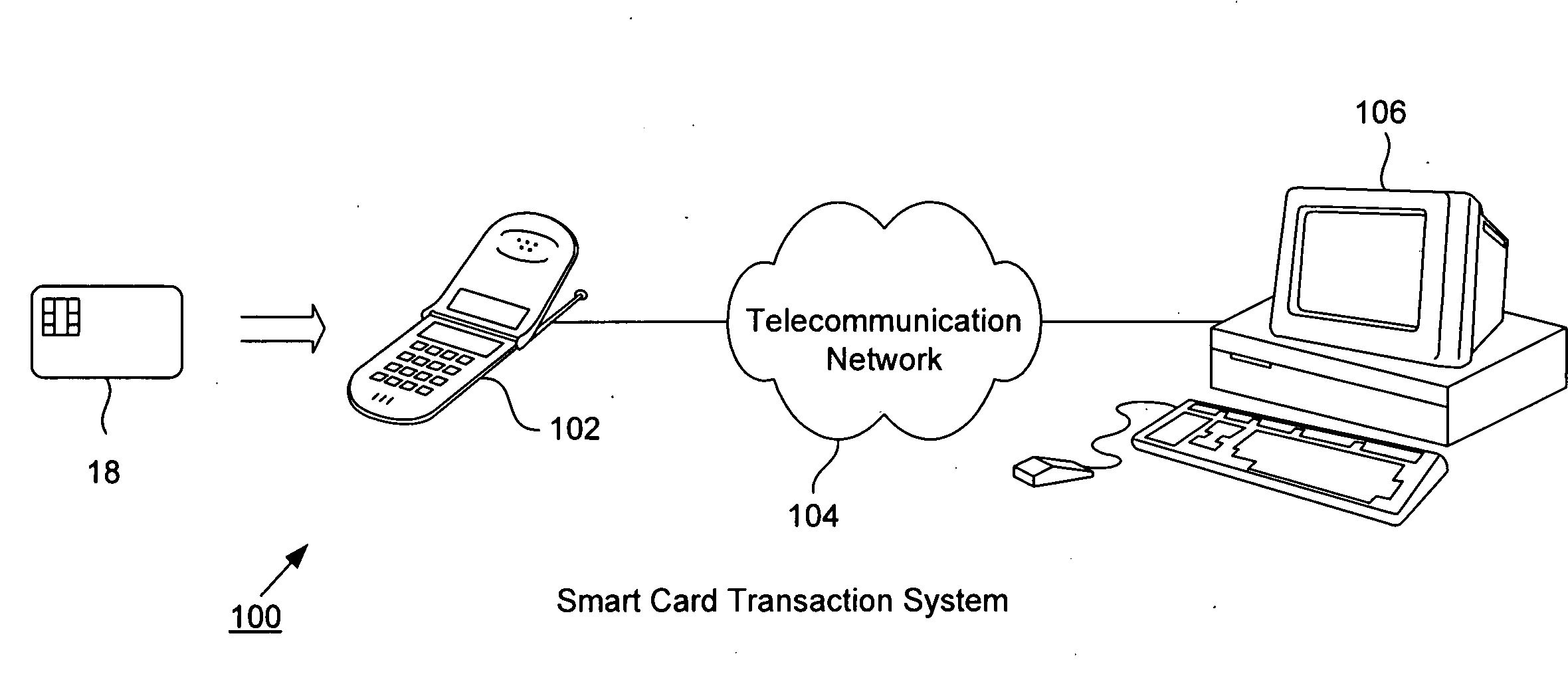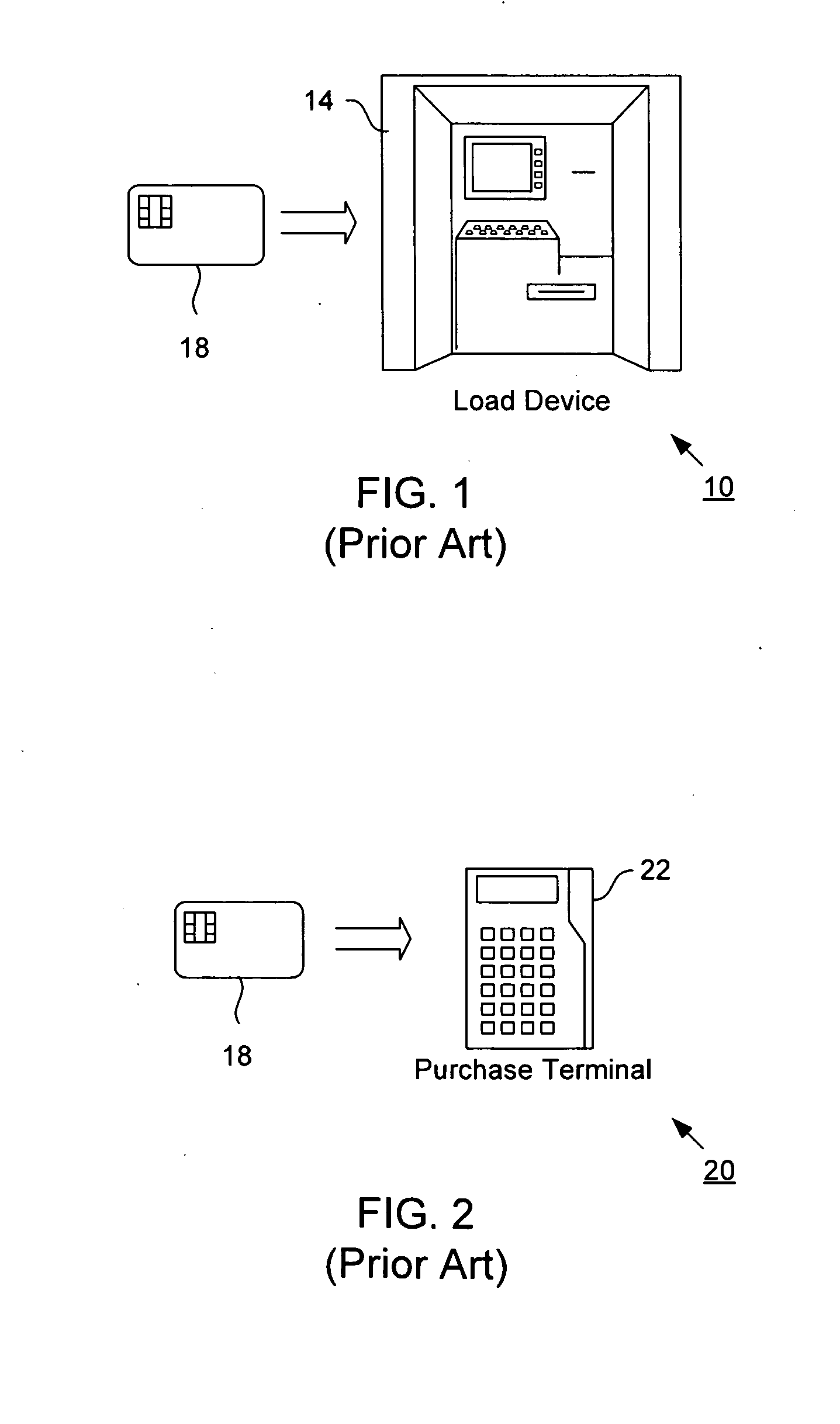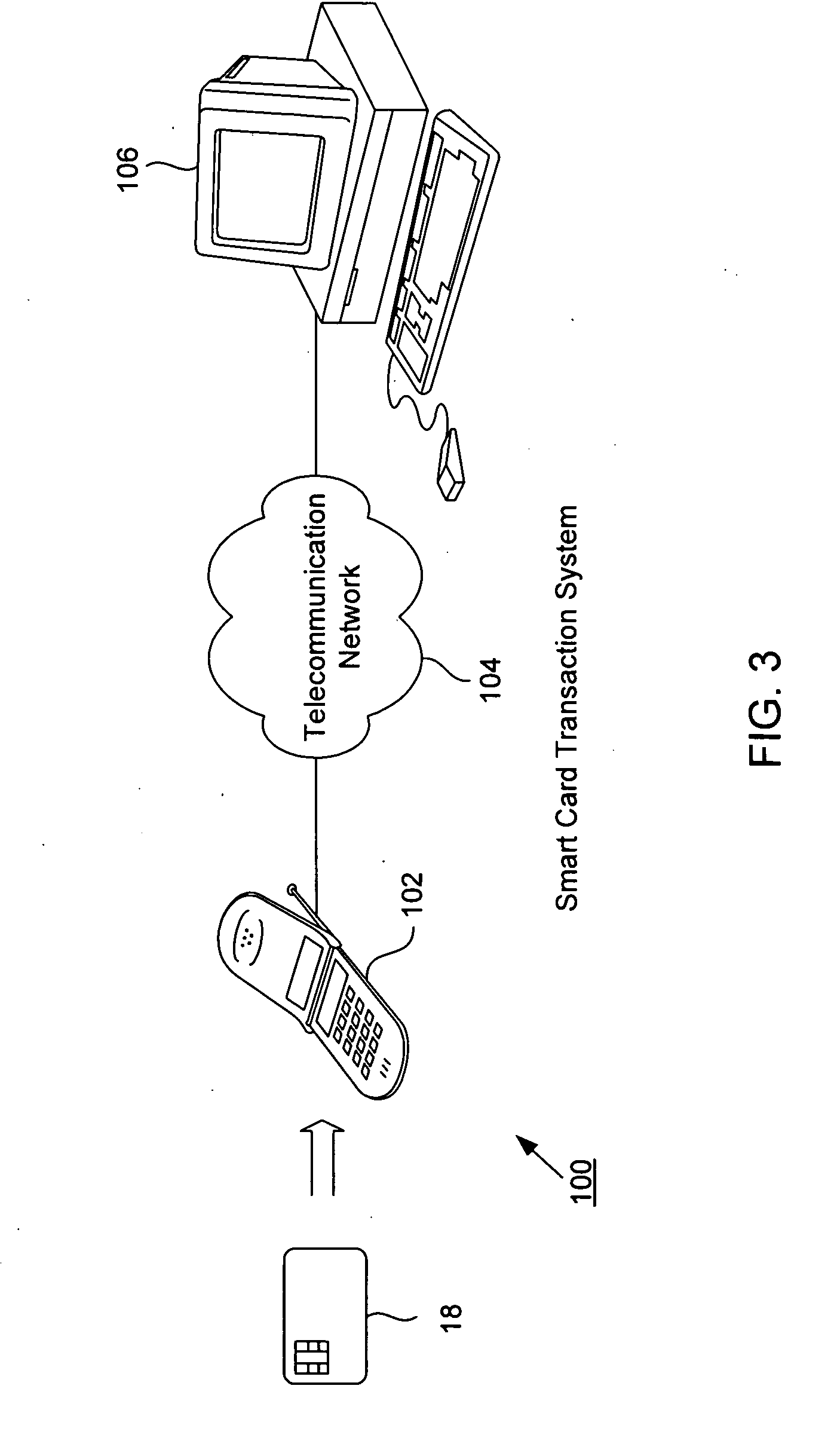Smart card load and purchase transactions using wireless telecommunications network
a wireless telecommunications network and smart card technology, applied in the field of smart cards, can solve the problems of not always convenient for a consumer to find an atm, difficult for this person to load difficulty in loading value onto the smart card, so as to increase the value of the network, facilitate use, and simple
- Summary
- Abstract
- Description
- Claims
- Application Information
AI Technical Summary
Benefits of technology
Problems solved by technology
Method used
Image
Examples
Embodiment Construction
[0031]FIG. 3 illustrates a smart card transaction system 100 according to one embodiment of the invention. This high level diagram illustrates that system 100 includes a mobile telephone 102 (also referred to as a wireless telephone, cellular telephone or handset), a smart card 18 able to be inserted into the handset, a telecommunications network 104 and a server computer 106 (which may be connected to other computers and / or communications networks). Thus, as opposed to the prior art loading and purchasing techniques shown in FIGS. 1 and 2 in which integrated units are used, FIG. 3 illustrates a distributed system in which the card reader is present within handset 102 and processing occurs at a remote location at server 106 or elsewhere.
[0032]Handset 102 is any suitable mobile telephone that incorporates a smart card reader for reading smart card 18. Implementation of a card reader inside a handset can be accomplished by those of skill in the art. In a preferred embodiment, system 1...
PUM
 Login to View More
Login to View More Abstract
Description
Claims
Application Information
 Login to View More
Login to View More - R&D
- Intellectual Property
- Life Sciences
- Materials
- Tech Scout
- Unparalleled Data Quality
- Higher Quality Content
- 60% Fewer Hallucinations
Browse by: Latest US Patents, China's latest patents, Technical Efficacy Thesaurus, Application Domain, Technology Topic, Popular Technical Reports.
© 2025 PatSnap. All rights reserved.Legal|Privacy policy|Modern Slavery Act Transparency Statement|Sitemap|About US| Contact US: help@patsnap.com



